Fossil Hill, Texas
Research Natural Area
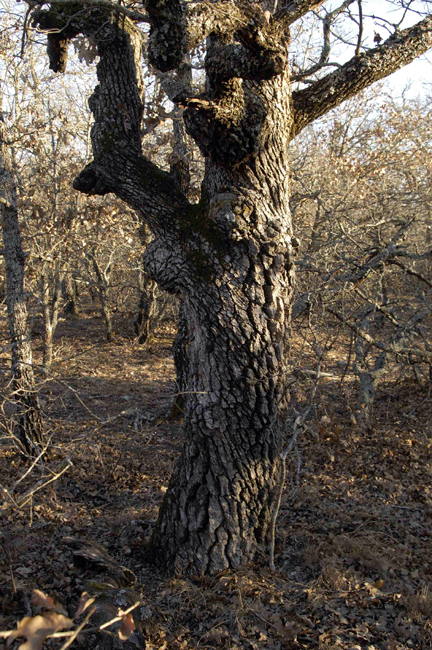
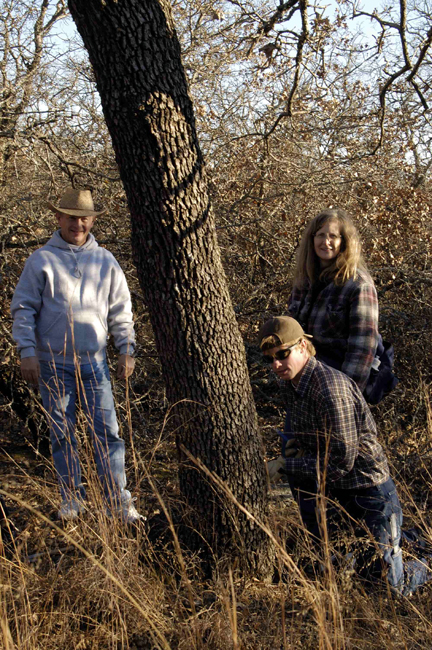
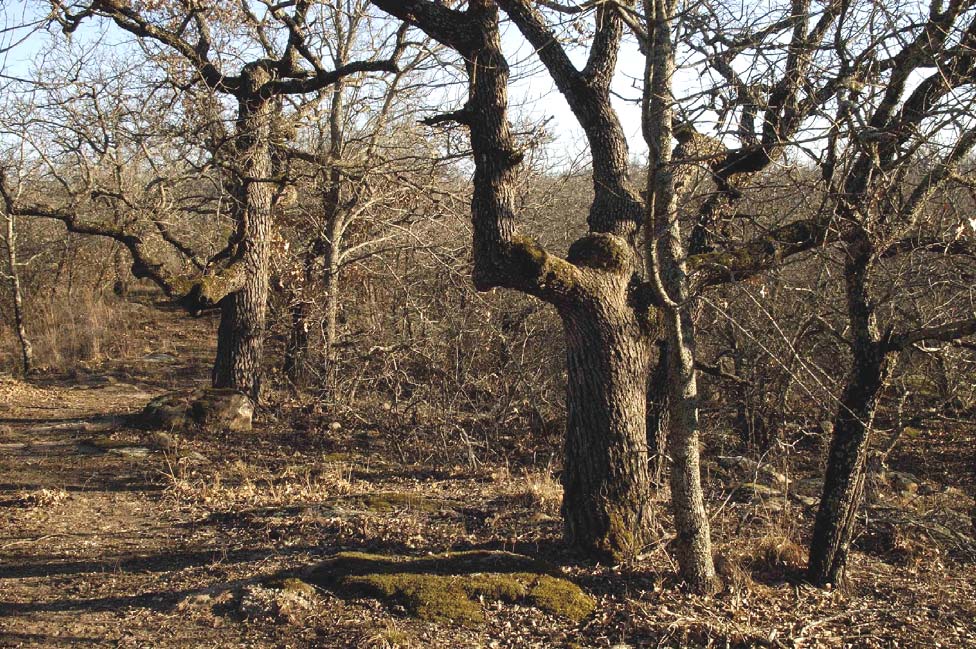
This is a privately owned old-growth Cross Timbers woodland on a steep rocky headland overlooking Amon Carter Lake in southeast Montague County, Texas. This 137 acre property is mostly undisturbed old-growth, dominated by post oak (Quercus stellata) and blackjack oak (Quercus marilandica; Figure 1). An orthoconglomerate overlying limestone and shale caps the ridge crests. The limestone layer has abundant marine fossils including crinoids, pelecypods, and gastropods. (i.e. “Fossil Hill”). The soils consist of immature reddish soils developed on Pennsylvanian strata with rocks and gravel at the surface. Old-growth remnants survive not only on the steep rocky slopes at this site but also along the level ridge top (Figures 2-6). Mexican plum, sumac, viburnum, dogwood, chittamwood, Hawthorne, coralberry, sedges, Greenbriar, Virginia creeper, poison ivy, and Dewberry have also been identified in these old-growth woodlands. Native grasses include little bluestem, big bluestem, switchgrass, indiangrass, purpletop, sideoats grama, treeawn, dropseed, Texas grama, buffalograss, lovegrass, and dicanthelium. Post oak and a dense understory dominate the ridge crest (Figure 2).

A 0.25 hectare plot was installed on the flat ridge top in the middle of a brushy post oak dominated woodland (December 12, 2006, elevation = 330 meters). All stems ≥10 cm DBH were mapped to submeter accuracy using a Trimble GeoXM GPS and Laser Atlanta Advantage GPS system. All stems <10 cm at breast height were counted and identified. A random sample of 40 post oak were cored for age structure, recruitment, and tree-ring data. The results of the stem mapping and vegetation survey are presented in Figure 7 and Tables 1 and 2. There are only 9 trees ≥36 cm DBH in this fixed plot (all post oak, Figure 4). A possible wind event was noted in the northwest section of the plot (i.e., a few uprooted trees, multiple young coppice growth, and absence of large mature trees).
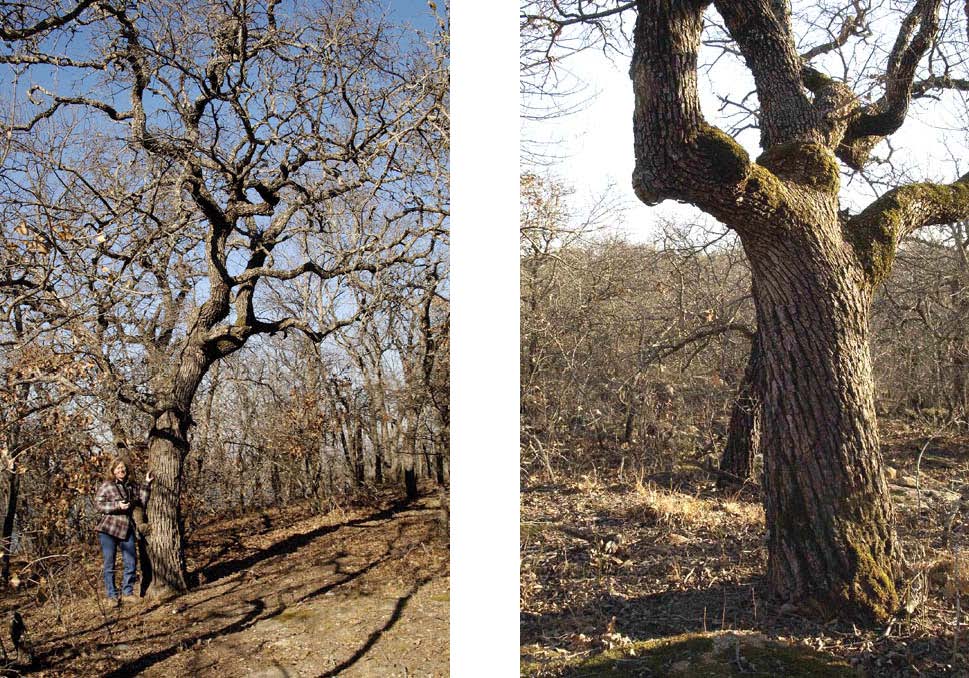
Figure 3 (left). This mature, full-canopy post oak is located above the escarpment at Fossil Hill.
Figure 4 (right). This short gnarly post oak is one of the oldest trees at Fossil Hill (see Figure 1).
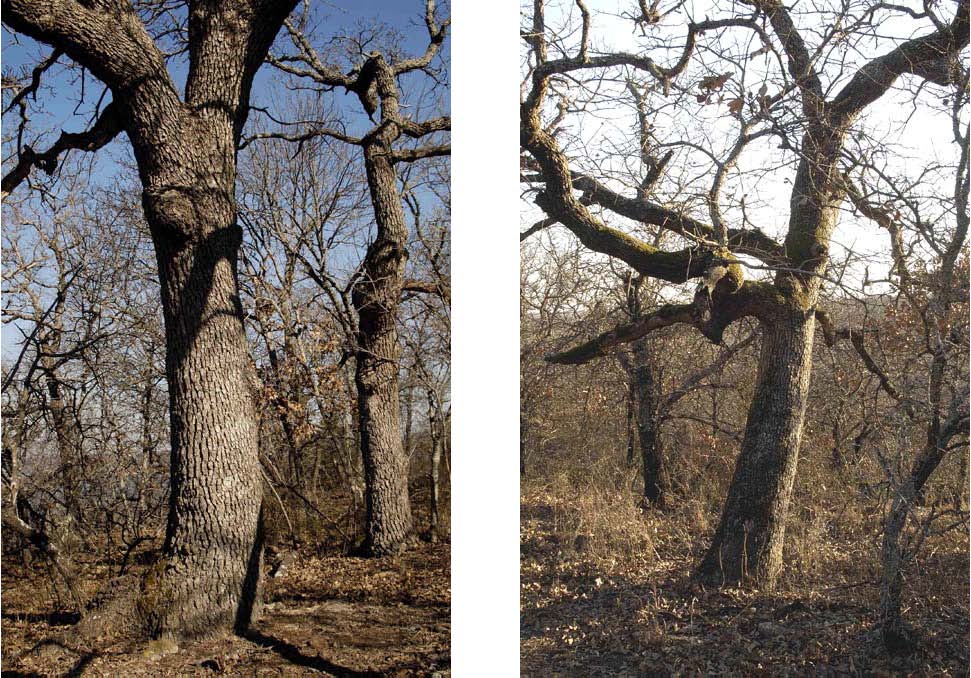
Figure 5 (left). Ancient post oaks are common at Fossil Hill.
Figure 6 (right). This old-growth post oak is located near a small opening in the canopy, with glade vegetation cover.
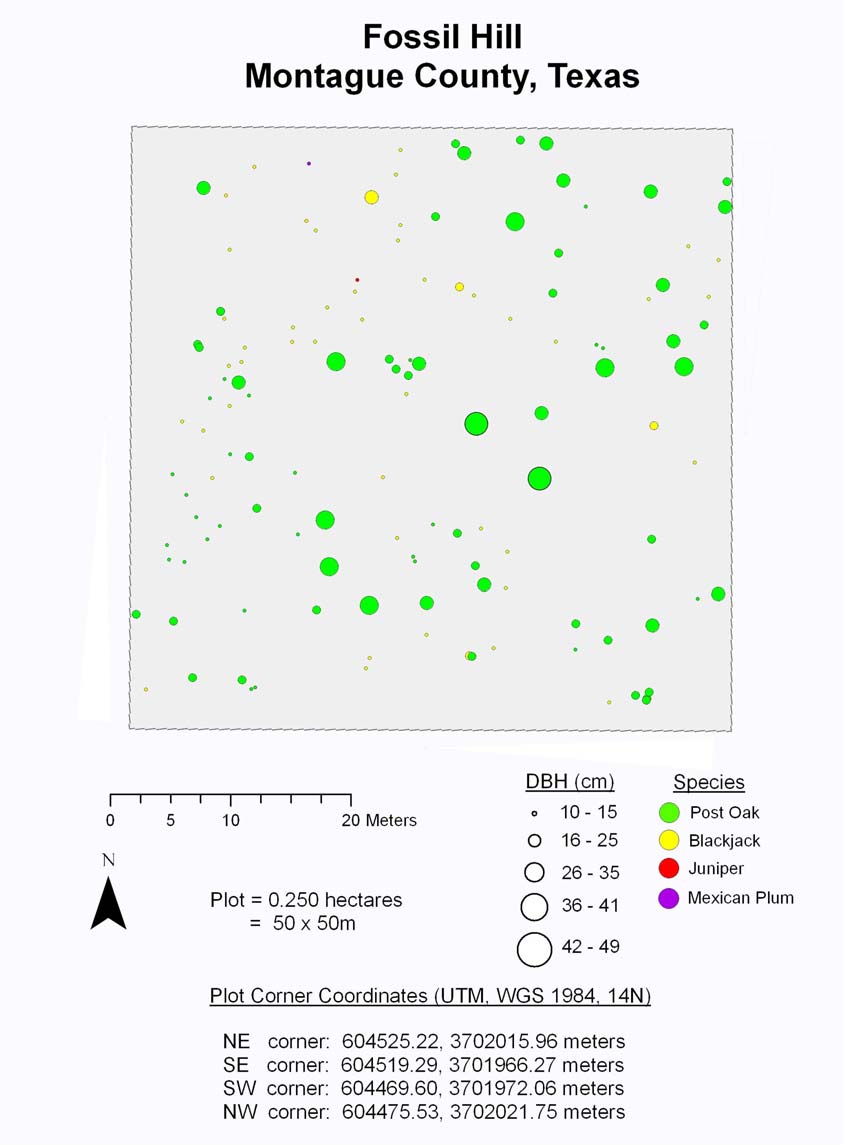
Figure 7. This is an illustration of the 0.25 ha stem map installed in the brushy old-growth woodlands on the flat ridge crest at Fossil Hill. Gaps between trees above are mostly occupied with a dense understory of oak saplings (<10 cm DBH). Tree diameters are exaggerated to more clearly illustrate species composition.
Table 1. Species composition is listed for all trees ≥10 cm DBH mapped within the 0.25 ha fixed plot. A total of 133 trees were counted. Post oak was the most abundant (81 trees with a relative frequency of 61%) and most dominant (basal area = 3.59 m2, and a relative dominance of 84%).
| Number | Relative | Total Basal | Relative | |
|---|---|---|---|---|
| Species | of trees | Frequency | Area (m2) | Dominance |
| Post Oak | 81 | 0.61 | 3.59 | 0.84 |
| Blackjack | 51 | 0.38 | 0.66 | 0.15 |
| Mexican Plum | 1 | 0.01 | 0.01 | 0.01 |
| Total | 133 | 1.00 | 4.26 | 1.00 |
Table 2. The species composition for all stems <10 cm DBH is calculated. Blackjack oak is the clear dominate in the understory (480 stems, relative frequency = 85%). Several species were only present in understory layer including hawthorne (Crataegus sp.), hackberry (Celtis sp.), chittamwood (Bumelia sp.), and juniper (Juniperus virginiana). The total number of stems reveals the dense, brushy nature of this site that is not apparent from the stem map.
| Species | Number of Stems | Relative Frequency |
|---|---|---|
| Blackjack | 480 | 0.85 |
| Post Oak | 49 | 0.09 |
| Hawthorne | 16 | 0.03 |
| Mexican Plum | 10 | 0.02 |
| Hackberry | 6 | 0.01 |
| Chittamwood | 4 | <0.01 |
| Texas Ash | 2 | <0.01 |
| Juniper | 1 | <0.01 |
| Total | 567 | 1.00 |